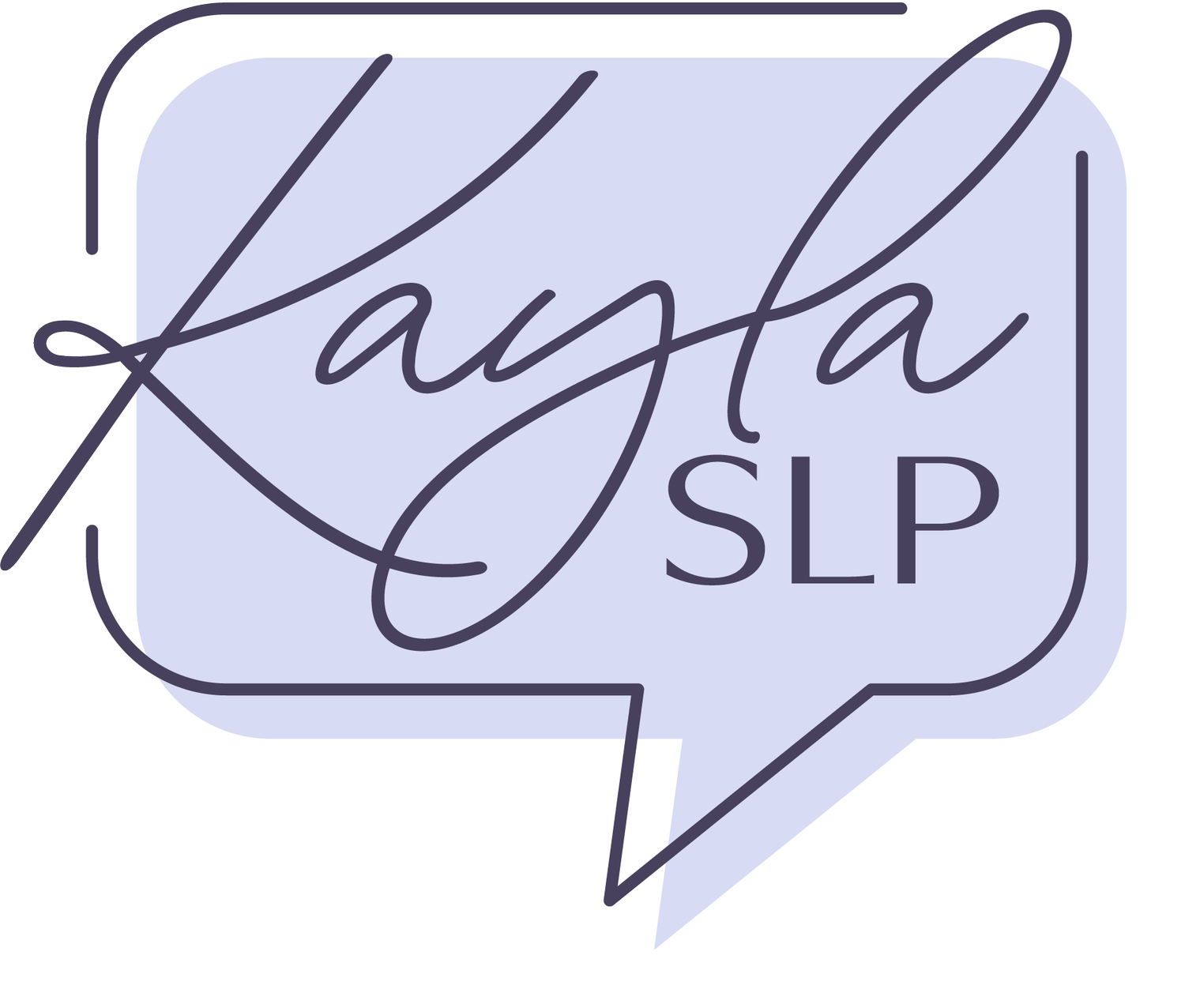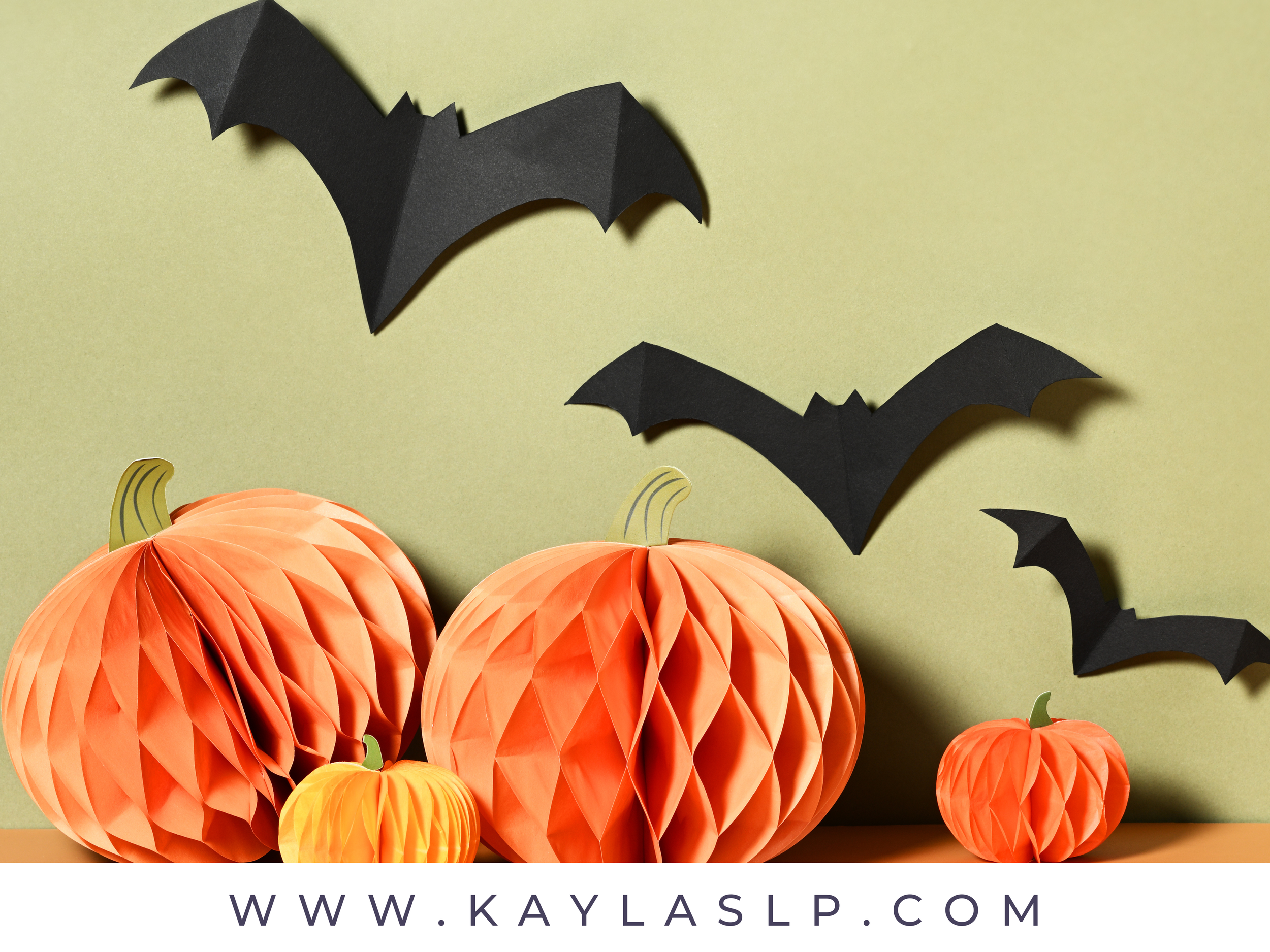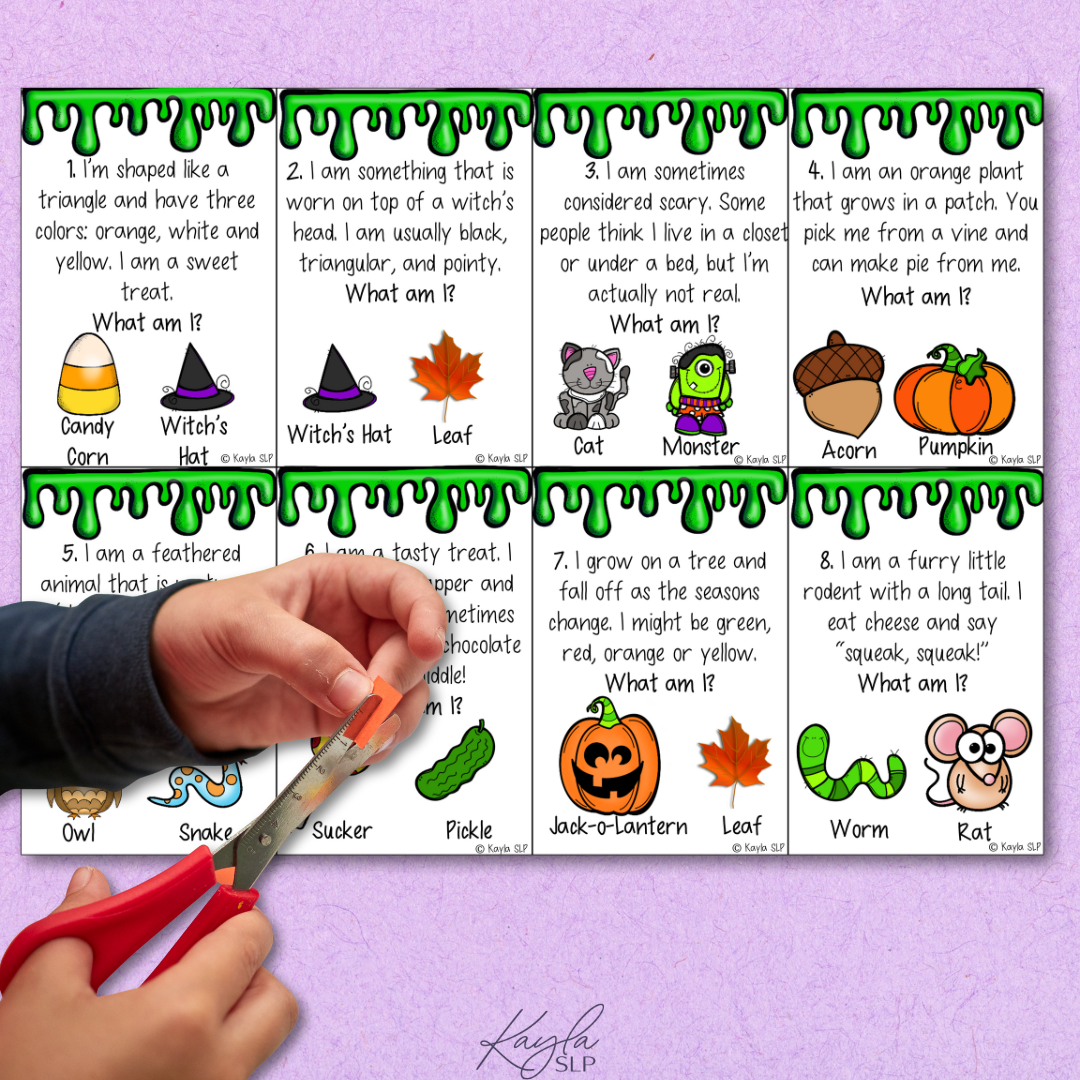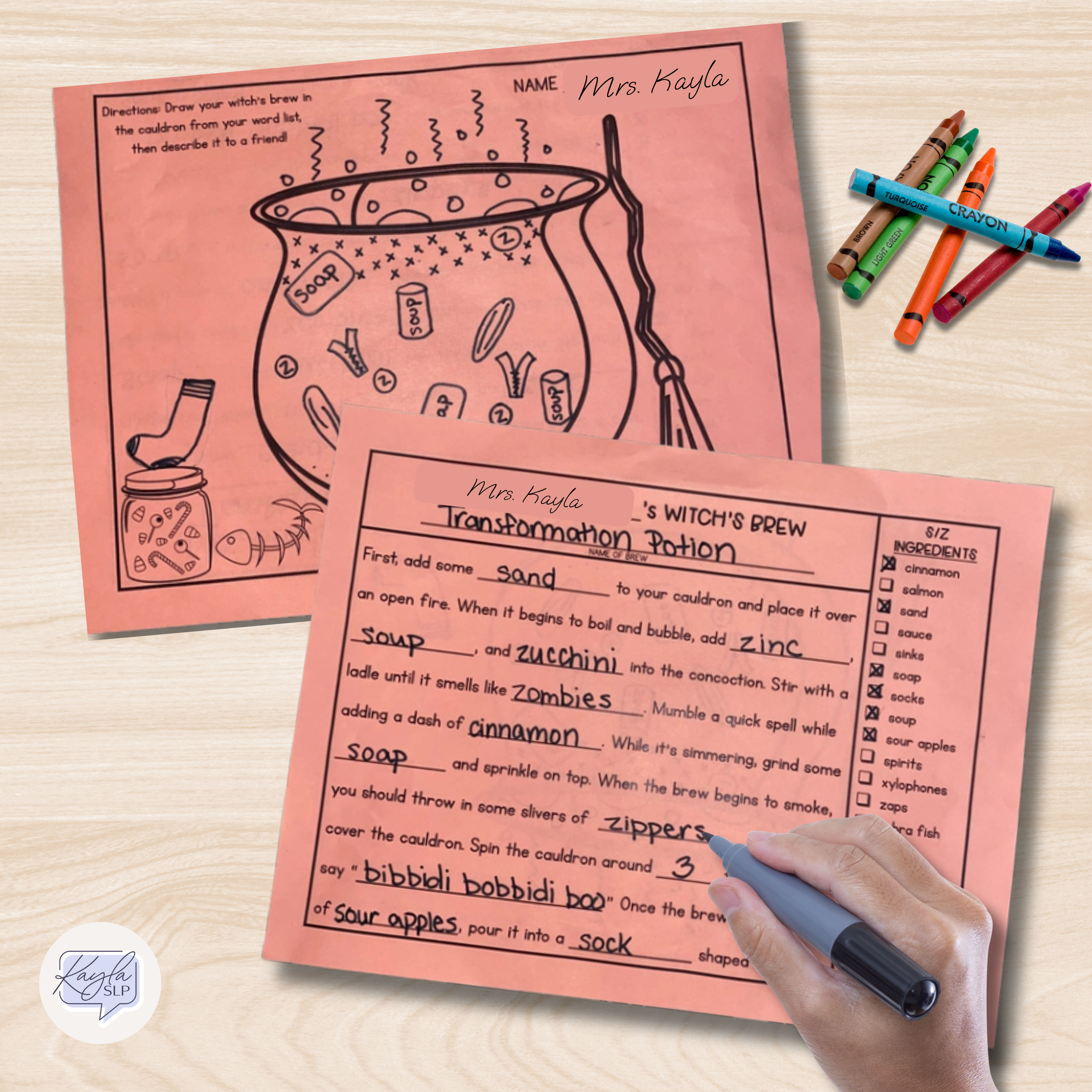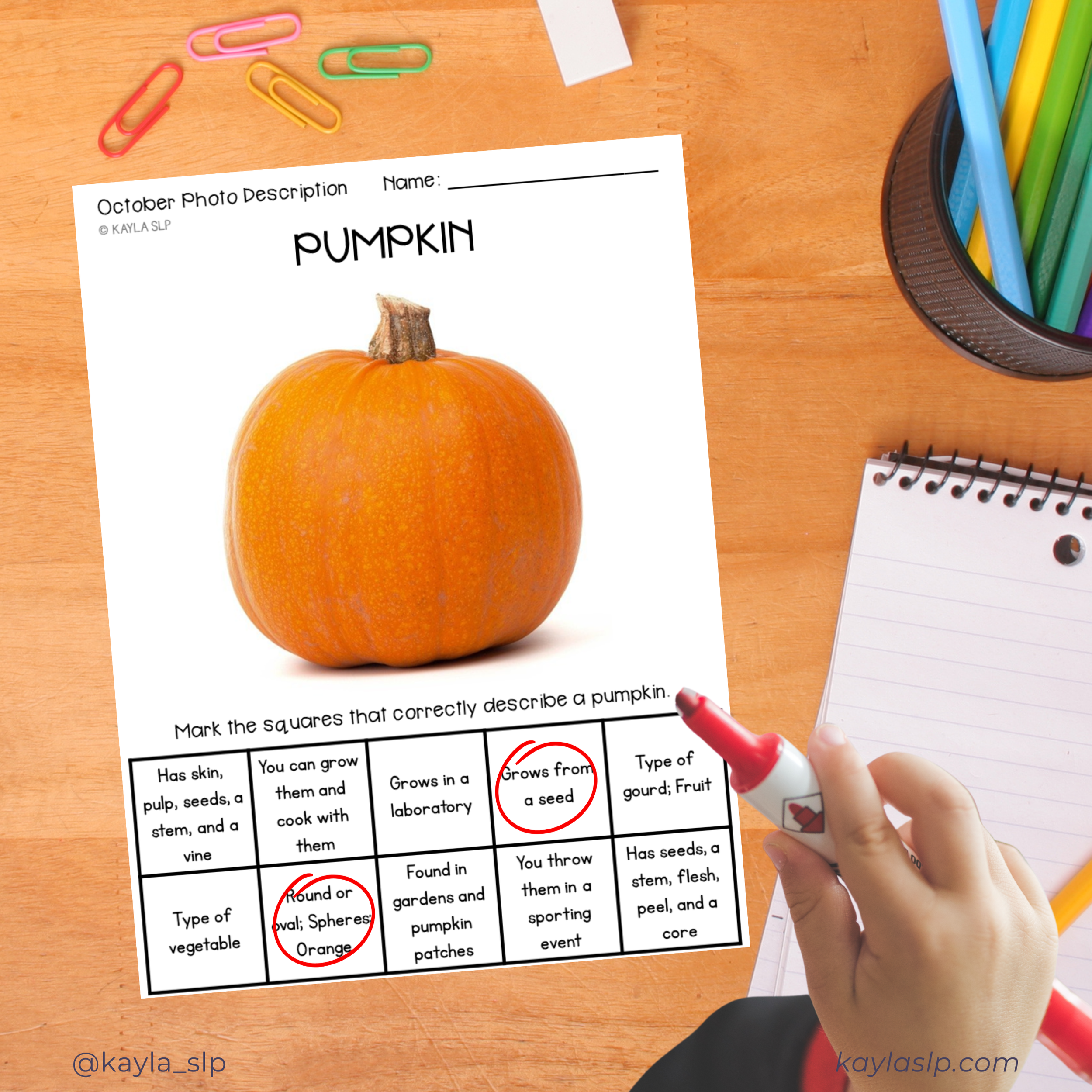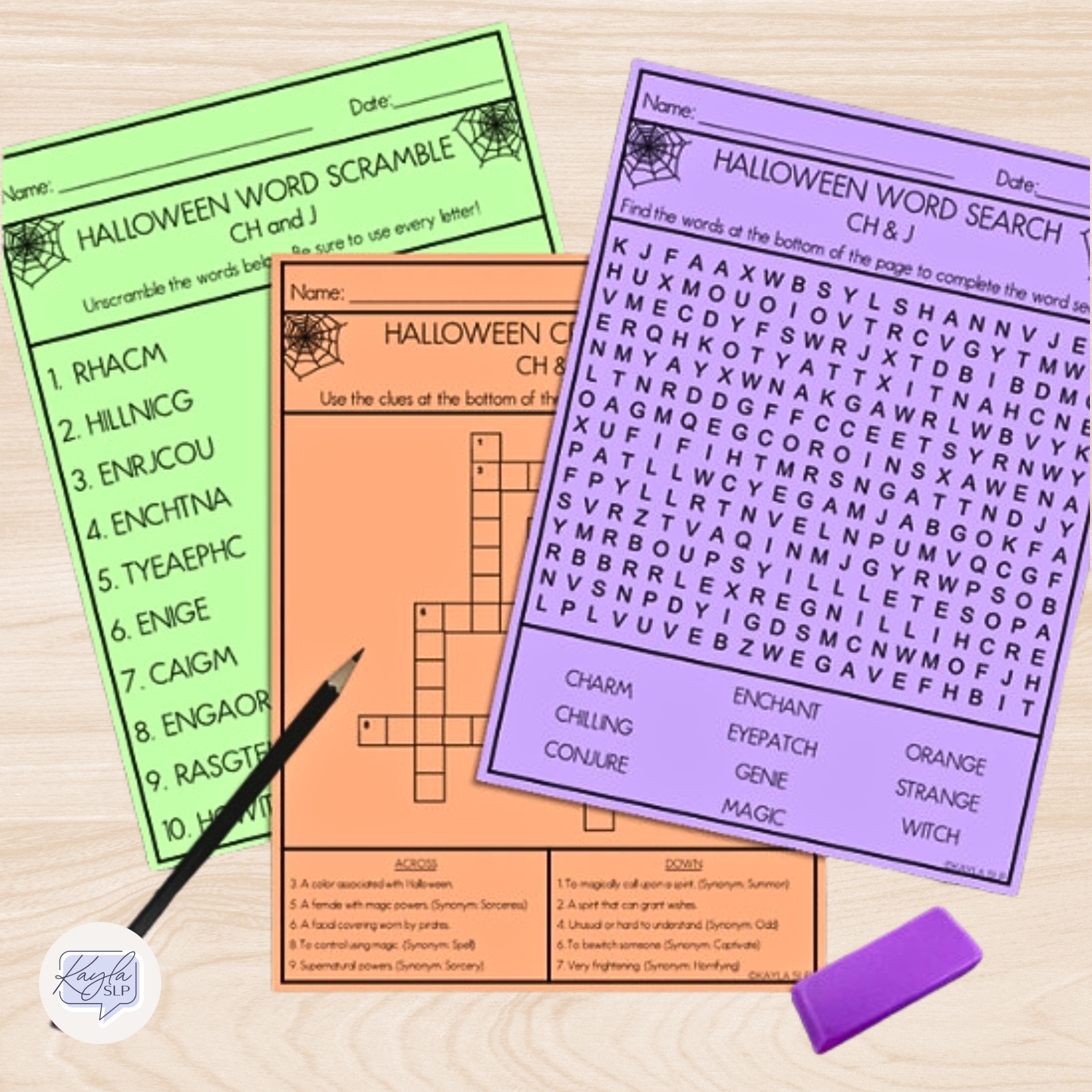Halloween Speech and Language Activities for October
*As an Amazon Associate, I earn from qualifying purchases.
I don’t know about you, but October always sneaks up on me. One minute it’s apples and leaves, the next you’re surrounded by pumpkins, costumes and candy. The good news? This time of year is so FUN! The trick is in choosing activities that don’t just feel seasonal, but actually support meaningful communication and language growth.
Here’s a round‑up of engaging Halloween‑themed activities, plus links to no‑prep/low‑prep resources you can grab right now. Use them in therapy or share with caregivers for home carry‑over.
Why Use Halloween as a Theme?
It’s motivating. Costumes, candy, spooky fun: it all pulls kids in.
It’s rich in language opportunities: describing costumes or pumpkins, sorting candy, making choices, telling about past events, requesting help.
It offers variety of goals: articulation, language (vocab, inference, narration), pragmatics, carry‑over into real‑world routines.
It supports engagement. When children are interested, they are more likely to participate fully and practice more.
My top activity picks & how I use themHere are six resources I use each October. I’ve included the direct links so you can check them out, decide for your group, or send them to caregivers.
How I use it: Great for elementary language groups. Ready the clues from each card and have your student make an inference.
Goals targeted: inferencing, critical thinking, language elaboration (“I think… because…”).
How I use it: For students of all ages and mixed groups. They “add ingredients” (target words) to a cauldron, say target words/sounds, create sentences like “The witch adds a black bat wing to her brew.”
Goals targeted: articulation carry‑over, sentence formation, vocabulary expansion (ingredients, verbs, adjectives).
How I use it: Watch the pre-teach videos, then use the picture as visual prompt to describe the item. Multiple levels are included, from mulitple choice (pictured above) to writing descriptive sentences and paragraphs.
Goals targeted: expressive language, elaboration, written description (for older kids).
How I use it: Each student gets a word game containing their target sound. Work together or separately and say target words 3‑5 times or in a sentence. It can also be sent home as homework!
Goals targeted: speech sound practice in sentence context, generalization, engagement, home csarryover
How I use it: Great for social‑pragmatic groups or students working on emotional vocabulary. “Which pumpkin face is worried? Why might someone feel worried on Halloween?”
Goals targeted: emotion labeling, perspective taking, pragmatic conversation starters.
How I use it: Young students or students who need more hands-on/interactive activities. Match two halves to make a whole candy corn using a Halloween candy theme to keep it fun.
Goals targeted: vocabulary, language flexibility, word relationships.
BONUS ACTIVITY: Halloween Sorting and Categories
How I use it: This is a hands-on activity with two levels, so you can use this with elementary & secondary students. Cut out the included items/words and sort them into the correct categories!
Goals targeted: themed vocabulary, categories, sorting
How to Build Your Session (or Caregiver “Homework”)
Step 1: Choose the resource + decide the goal
Example: Use the Leveled Inferences activity for a 3rd grade group targeting reasoning & language.
Or choose the Candy Corn Synonyms freebie for a quick warm‑up in a mixed articulation/language group.
Step 2: Set the stage with fun
Bring in visuals: real candy corn, a mini cauldron, jack‑o‑lantern pictures.
Keep the atmosphere seasonal = motivating.
Pre‑teach any key vocabulary needed (e.g., “elaborate”, “infer”, “synonym”, “antonym”, “growl”, “floating”).
Step 3: Model & prompt
Model first: “I see a black cat. I infer that it might be up to something because…”
Pause. Give wait time. Encourage student(s) to use full sentences when possible.
For younger kids: scaffold with visual choices (“Which one? big/small? scary/friendly?”).
Step 4: Extend & generalize
After main activity, ask “How could we use this idea in real life?” e.g., “If you were trick‑or‑treating and saw a haunted house, what would you infer? What would you say?”
Use follow‑up: craft a short story, role‑play a scenario, have them pair up and retell each other.
Step 5: Send it home
Share a copy of the activity with caregivers: “Try this at home! After you hand out candy, talk about synonyms: ‘sweet / sugary’, ‘dark / spooky’.”
Suggest simple home routines: describing costumes, using target sound words in context, pointing out emotions on jack‑o‑lantern faces.
Tips for Maximum Impact
Target mixed groups thoughtfully: if you have kids with varied goals, choose a resource (like Witch’s Brew) that supports both articulation and language.
Use visual support: Kids with language disorders often need visuals, sentence starters, or frames to help them elaborate.
Keep it low‑prep but high payoff: These resources above are designed to make your life easier while giving kids meaningful practice.
Rotate activities quickly to maintain engagement. Ten minutes on one, then switch to another.
Celebrate extension: if a student uses full sentence rather than single word, spotlight that success: “Great job using a sentence! You described the witch’s brew and said why you’d never taste it.”
Use home‑carry prompts: something caregivers can easily pick up so communication doesn’t stay stuck in the therapy room.
With that in mind…
With a little planning and the right tools, our therapy rooms become trick‑or‑treat hotspots for language growth.
Happy October and happy Halloween!
Love this post?
Pin it for later!
Save this blog post to your favorite Pinterest board so you can come back to it anytime.
